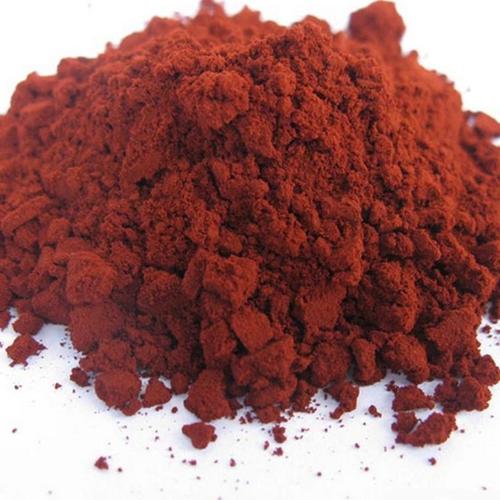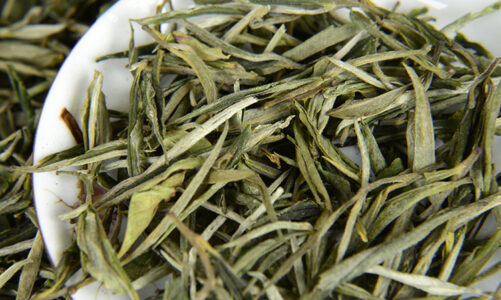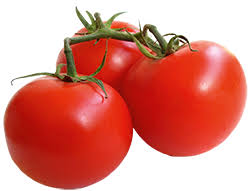Natural Astaxanthin is one of the strongest natural antioxidants in the world. It effectively removes oxygen free radicals in cells, enhances cell regeneration, maintains body balance and reduces the accumulation of senescent cells. It protects the health of cells and DNA from the inside out. Thereby protect skin health, promote hair growth, relieve exercise fatigue, and enhance vitality. Astaxanthin powder has strong antioxidant activity. It has a positive role in improving immunity, preventing the occurrence and development of tumors, cardiovascular diseases, and other chronic diseases, and delaying aging.
Astaxanthin is a kind of carotenoid, which is a strong natural antioxidant. Like other carotenoids, it is a fat-soluble and water-soluble pigment that exists in marine organisms such as shrimp, crab, salmon, and algae.
Astaxanthin, also known as lobster shell pigment, is a carotenoid and the highest level product of carotenoid synthesis. It is dark pink and has a chemical structure similar to β-carotene.
β- carotene, lutein, canthaxanthin, lycopene are all intermediate products of carotenoid synthesis, so in nature, astaxanthin has the strongest antioxidant properties. It widely exists in the biological world, especially in shrimp, crab, fish, algae, yeast and bird feathers. In addition, it is one of the main carotenoids in marine organisms.
Main Sources
At present, astaxanthin (also known as super vitamin E) is mainly produced in two ways: artificial synthesis and obtained from organisms.
There are three main sources of natural astaxanthin: waste from the aquatic product processing industry (crustaceans such as shrimps and crabs), Phaffia rhodozyma and microalgae (Haematococcus pluvialis).
The extraction of marine product wastes refers to the extraction of wastes from the aquatic product processing industry and various marine product processing wastes. Yeast extraction, the colony of Phaffia rhodozyma (Phaffia rhodozyma) in the yeast is red due to the production of carotenoids such as astaxanthin. There is a uniform distribution of carotenoids in cell lipids. The average content of astaxanthin in natural Phaffia rhodozyma is 0.40%. Therefore, Phaffia rhodozyma has attracted people’s attention because of its high production of astaxanthin.
Extracted from algae, the natural astaxanthin is mainly derived from Haematococcus pluvialis. The content of astaxanthin in Haematococcus pluvialis is 1.5% to 3.0%, which is regarded as a “concentrate” of natural astaxanthin. A large number of studies show that the accumulation rate and total production of astaxanthin in Haematococcus pluvialis is higher than that of other green algae, and the ratio of astaxanthin and its esters contained in Haematococcus pluvialis (about 70% monoester, The ratio of 25% diester and 5% monomer) is very similar to that of aquaculture animals. This is an advantage that astaxanthin extracted through chemical synthesis and the use of Phaffia rhodozyma does not have.
In addition, the structure of astaxanthin in Haematococcus pluvialis is mainly 3S-3’S, which is basically consistent with the structure of it in aquatic objects such as salmon. While the structure of astaxanthin in Phaffia rhodozyma is 3R- 3 Type R. At present, Haematococcus pluvialis is recognized as the best organism for the production of natural astaxanthin in nature. Therefore, the use of this kind of microalgae to extract astaxanthin undoubtedly has broad prospects for development. It has become a research hotspot in the production of natural astaxanthin in the world.
Natural Astaxanthin Advantages
Synthetic astaxanthin is not only expensive, but compared with natural astaxanthin, there are significant differences between the two in terms of structure, physiological function, application effect and safety. Artificially synthesized astaxanthin can be prepared from carotene by chemical methods. This is the most important source of astaxanthin in fish feed, and BASF, DSM, Xinhecheng companies are capable of synthetic production globally. From the structural point of view, natural astaxanthin is mainly in 3S and 3’S (left-handed) conformations, while synthetic astaxanthin is a mixture of 3 configurations, mainly 3R and 3’S (racemic). In addition, synthetic astaxanthin cannot be converted into a natural structure in animals. The stability and antioxidant activity of natural astaxanthin in physiological functions are significantly higher than that of synthetic astaxanthin. The biological absorption and coloring properties of natural astaxanthin are also superior to synthetic astaxanthin in terms of application effects.
The strongest antioxidant found by humans so far
Astaxanthin is recognized as the fourth-generation antioxidant, and it is also the strongest single-molecule substance found in humans to date. If the first-generation antioxidant is vitamins (such as vitamin A, C, E); the second-generation antioxidant is B-carotene, coenzyme Q10, SOD. The third-generation antioxidant is anthocyanins (OPC ) Grape seed, blueberry extract, green tea (tea extract), lipoic acid, lycopene. The fourth-generation antioxidant is astaxanthin (from Haematococcus pluvialis). It is the strongest antioxidant we find in nature so far. Further more, its antioxidant activity is 1,000 times that of vitamin E, 17 times of grape seed, 20 times of lycopene (of which lycopene and B-carotene also promote oxidation), and 75 times of lipoic acid. It can scavenge free radicals well whether in fat-soluble or water-soluble state.
What’s the point of discovering astaxanthin
Some people say: The discovery of astaxanthin is comparable to the discovery of “penicillin” in the early 20th century. Due to the discovery and application of antibiotics such as penicillin, high-incidence diseases such as pneumonia and meningitis that plagued humans in that era were effectively controlled.
Today, the scientific community has finally made it clear that many chronic diseases that plague humans, such as hyperlipidemia, diabetes, coronary heart disease, atherosclerosis, cerebrovascular disease, gout and other metabolic diseases, as well as the pathogenesis of chronic poisoning, are all “oxidative stress”. If we can effectively prevent oxidative damage at the beginning of the disease, it is expected to stop and delay the occurrence and development of this type of disease.
Benefits of Astaxanthin
Protective effects of eyes and central nervous system
The human retina and central nervous system (brain) are rich in unsaturated fatty acids. Therefore, free radicals produced by oxidation can easily cause peroxidative damage. Studies have shown that astaxanthin can easily pass through the blood-brain barrier and cell membranes. It can effectively prevent the oxidation of the retina and damage to the photoreceptor cells, and protect the central nervous system, especially the brain. Thereby, it effectively prevent ischemia-regeneration Perfusion injury, spinal cord injury, Parkinson’s syndrome, Alzheimer’s syndrome and other central nervous system injuries. In particular, the effect of retinal macular degeneration is more significant than that of lutein. The biggest advantage of using astaxanthin as a drug to prevent re-infarction after cerebral infarction is that it will not cause coagulation dysfunction like antiplatelet drugs.
Can effectively anti-wrinkle whitening
The skin consists of three layers: epidermis, dermis, and subcutaneous fat. The dermis contains collagen, elastin, and other fibers to form the skeleton that supports the skin. It is these elements that make the skin look smooth and youthful, and these elements are also vulnerable to UVA and UVB damage.
Ultraviolet rays are long-wave ultraviolet rays UVA and short-wave ultraviolet rays UVB. Among them, the long-wave ultraviolet rays such as UVA can reach the dermis due to its relatively long wavelength, and mainly damage collagen and elastin. The skeleton supporting the epidermis disappears, resulting in uneven collapse of the epidermis and the formation of skin wrinkles. UVB mainly acts on the epidermis, causing sunburn or melanin deposition, forming spots or darkening the skin.
Ultraviolet UV will produce in situ reactive oxygen species and matrix metalloproteinases. These factors are the root cause of wrinkles because they destroy the collagen matrix in the dermis.
The skin’s own repair mechanism is able to rebuild damaged collagen. However, if the destructive activities of reactive oxygen species (ROS) and matrix metalloproteinases (NMP) cannot control effectively, they will continue to damage these collagens, which will seriously hinder the skin’s own repair process. Astaxanthin can significantly reduce the damage of ROS and NMP to the collagen and elastin of the dermis, ensuring the normal metabolism of the skin. If use the topical astaxanthin with the oral astaxanthin, and some foods rich in collagen at the same time, the repair of wrinkles will be quick.
UV radiation protection
As we all know, ultraviolet radiation is an important cause of photoaging of the epidermis and skin cancer. Studies show that astaxanthin has a special effect on transglutaminase. This can consume putrescine when the skin is exposed to light. The inhibitory effect of oral astaxanthin on the accumulation of putrescine is stronger than oral vitamin A. Therefore, the strong antioxidant properties of it may make it a potential photoprotective agent. Effectively remove free radicals that cause skin aging, and protect cell membranes and mitochondrial membranes from oxidative damage. Used to prevent skin photoaging.
Principle of sun protection: Astaxanthin has its unique molecular structure. The absorption peak of the substance is about 470nm. It is similar to the UVA wavelength (380-420nm). So a small amount of astaxanthin can absorb a large amount of UVA. Astaxanthin is like the most perfect and unique natural sunscreen on the planet, and like a natural parasol to cover the whole body. It can effectively prevent ultraviolet radiation, quench free radicals from ultraviolet rays, and reduce the damage of ultraviolet rays to the skin. In addition, it can quickly restore skin damaged by UV burns.
Prevent cardiovascular disease
Clinical studies of arteriosclerosis and related cardiovascular diseases show that the oxidation of low-density lipoprotein (LDL) is an important cause of arteriosclerosis.
The higher the concentration of LDL in the human body, and the thinning of blood vessels due to platelet deposition and obstructing the blood flow rate, the greater the risk of atherosclerosis in the human body. The high-density lipoprotein (HDL) in the blood has the opposite effect, it can prevent the occurrence of arteriosclerosis.
In human blood, astaxanthin is carried by very low density lipoprotein (VLDL), LDL and HDL. It has proved that 3.6 mg/d astaxanthin per person can prevent LDL oxidation for 2 weeks in vitro and clinical trials. In addition, animal studies have shown that it can significantly increase HDL and lower LDL in the body. Among them, HDL can increase from the original 49.7±3.6mg/dL to 66.5±5.1mg/dL. So speculates that astaxanthin can reduce the oxidation of apolipoprotein and can prevent arteriosclerosis, coronary heart disease and ischemic brain damage.
Different from general LDL lowering drugs, after taking 1.8, 3.6, 14.4 and 21.6 mg of astaxanthin daily for 2 weeks, the time of LDL oxidation was prolonged by 5.0%, 26.2%, 42.3% and 30.7%, respectively. Thereby preventing arteries The occurrence of atherosclerosis.
Suppress diabetic nephropathy
70% of people with diabetes will develop kidney damage within 5 years. Astaxanthin is the only substance we know so far that can effectively prevent diabetic kidney disease. It mainly destroys the basement membrane by directly protecting the glomerular basement membrane and preventing free radicals generated by hyperglycemia. In addition, it can also combat free radicals in renal tubular epithelial cells. And it protects the normal transport of glucose and phosphorus in renal tubular cells. This preserves important substances such as ATP and sodium-potassium ATPase. This ensures that not affect the blood flow of the kidney, and reduces the production of proteinuria. In order to avoid the occurrence of urinary bubbles, diabetic patients must start using ASTA natural astaxanthin in advance.
Studies have confirmed that 8 mg of astaxanthin can significantly reduce urine protein by 70% in 8 weeks.
Enhance immunity and relieve sports fatigue
Astaxanthin can significantly affect the immune function of animals. In the presence of antigen, it can obviously promote the ability of spleen cells to produce antibodies. It also enhance the role of T cells, and stimulate the production of immunoglobulin in the body. Astaxanthin can also partially restore the humoral immune system of elderly mice. Among them, the IgM, IgA and IgG in mice may increase to 10mol/L respectively. It shows that it can enhance the specific humoral immune response in the initial stage of antigen invasion. In addition, astaxanthin can also enhance the ability of mice to release interleukin-Iα and tumor necrosis factor α. Its effect is much stronger than β-carotene and canthaxanthin. Therefore, people belive that astaxanthin has a strong activity of inducing cell division and has an important immunomodulatory effect.
Anti-inflammatory and anti-infective properties
Free radicals can cause oxidative damage, and oxidative damage can cause joint pain and arthritis. The strong antioxidant properties of astaxanthin help to inhibit free radicals and reduce its oxidative damage to joints. Studies have shown that feeding mice with astaxanthin-rich Haematococcus pluvialis powder can activate the response of T lymphocytes. Thereby reduce the attachment and infection of Helicobacter pylori to the stomach. It has the same effect or better effect as 92% of anti-inflammatory drugs. The inflammatory factors (such as prostaglandin E, etc.) inhibited by 4mg/day of astaxanthin are equivalent to 4mg [cortisone], but it does not have the side effects of cortisone as we know it, so it is said to have no side effects. Hormones.
Suppress the tumor
Studies have shown that astaxanthin has significant anti-cancer properties. It can also induce transferase in the liver, and significantly inhibit mouse bladder cancer, rat oral cancer, colon cancer, and gastric cancer. Its effect is more obvious than β-carotene. In addition, it can prevent the carcinogenicity of aflatoxin. It also has a good effect on reducing the number and volume of liver tumor cells induced by aflatoxin.
Scientist believe that the anti-cancer mechanism of astaxanthin is related to cell membrane stability and protein gene expression. By changing the membrane stability and the number of gene expressions to regulate cell-to-cell communication, thereby improving the balance between cells and maintaining the normal function of cells.



